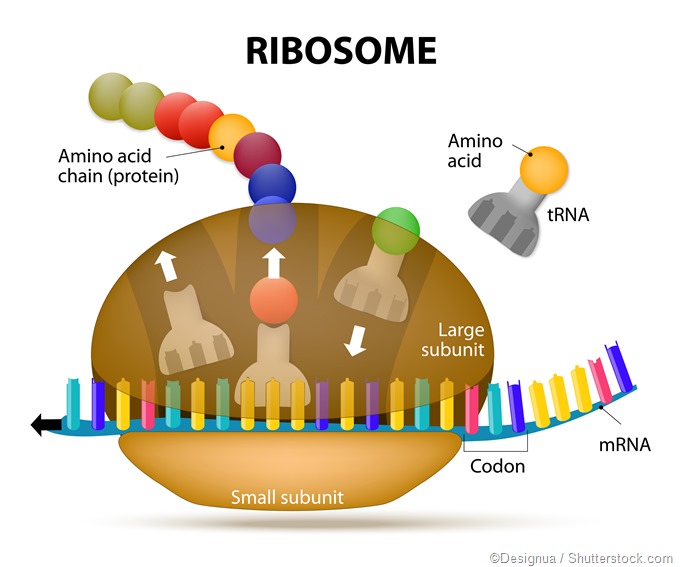The genetic code is a set of instructions that direct the translation of DNA into 20 amino acids, the basic units of proteins in living cells. The genetic code is made up of codons, which are three-letter chains of nucleotides. Each codon codes for one specific amino acid.

The code determines the order in which amino acids are added to a polypeptide chain during protein synthesis. Therefore, the genetic code dictates the sequence of amino acids in a protein.
For most genes, encodement involves a single scheme, which is often called the standard genetic code or genetic code, although there are codes that vary form this such as the code found in human mitochondria.
Discovery of the genetic code
In 1961, Francis Crick and colleagues introduced the idea of the codon. However, it was Marshall Nirenberg and co-workers who deciphered the genetic code. They showed that four nucleotide bases – A (adenine), U (uracil), G (guanine) and C (cytosine) ─ form codons of different base combinations that code for all 20 amino acids during protein synthesis.
Nirenberg and German scientist Johann Matthaei conducted a series of experiments to explore protein synthesis using synthetic RNA. They added RNA strands that contained only one of the four bases (A,G, U or C) base to a "cell free system," and then added radioactively tagged amino acids.
When RNA consisting only of the base U was added, radioactive measurements indicated the synthesis of molecules made up of just one single amino acid, which was phenylalanine. This showed that the triplet made up of bases UUU results in phenylalanine being added to the polypeptide chain as it grows. In this way, the researchers deciphered 35 codons by year 1963 and more than 60 by 1966.
University of Wisconsin researcher, Har Gobind Khorana built on Nirenberg's work by producing synthetic RNA molecules with specific nucleotide combinations. Then, in 1965, Robert Holley of Cornell University elucidated the structure of transfer RNA (tRNA), the molecule involved in translating RNA, so that a protein can be made.
Marshall W. Nirenberg, Har Gobind Khorana, and Robert W. Holley were jointly awarded the 1968 Nobel Prize in Medicine “for their interpretation of the genetic code and its function in protein synthesis."
Codons and amino acids
Each codon in the genetic code consists of three bases arranged in a specific order, with each combination corresponding to one particular amino acid. Given that there are four bases in RNA, there are 64 potential combinations of nucleotide triplets in the genetic code. While each codon can code for only one amino acid, multiple codons can code for the same amino acid.
This coding for one amino acid by more than one codon is referred to as the redundancy of the genetic code. For example, the amino acid lysine is coded for by both the AAG and AAA triplets. Importantly, there is no overlapping in the genetic code, so one nucleotide can only be part of one codon, not two codons that are next to each other.
START and STOP Codons
Translation begins with a START codon. AUG is the most common start codon, which in eukaryotes, codes for methionine and in prokaryotes, codes for formyl methionine.
STOP codons signal the end of the polypeptide chain during protein synthesis. Also called nonsense or termination codons the STOP codons are UAG, UGA, and UAA and are given the names amber, opal and ochre, respectively. STOP codons trigger the ribosome to release the new polypeptide chain, since no tRNA anticodons complement these stop codons.
References
- http://hyperphysics.phy-astr.gsu.edu/hbase/organic/gencode.html
- http://www.nature.com/scitable/definition/genetic-code-13
- http://www.nature.com/scitable/topicpage/reading-the-genetic-code-1042
- https://www.ncbi.nlm.nih.gov/
- http://www.ncbi.nlm.nih.gov/pmc/articles/PMC3293468/
Further Reading
Last Updated: Jul 19, 2023